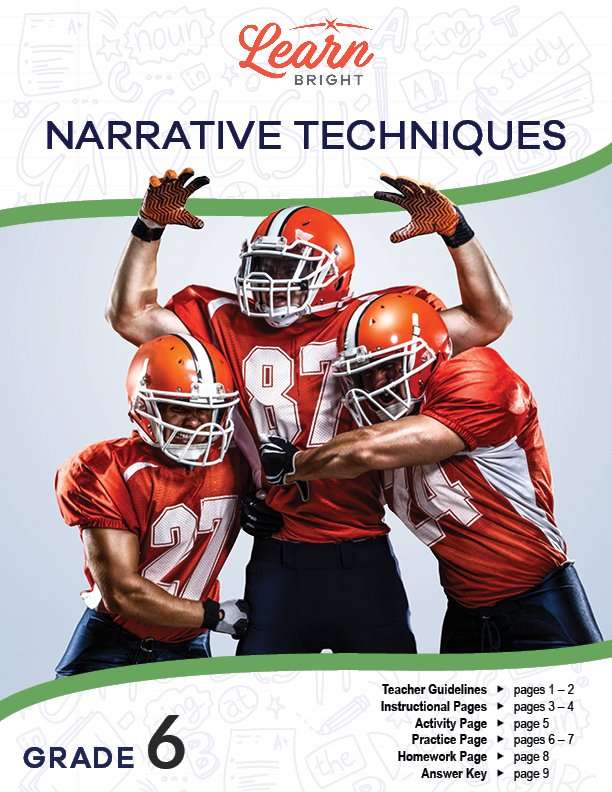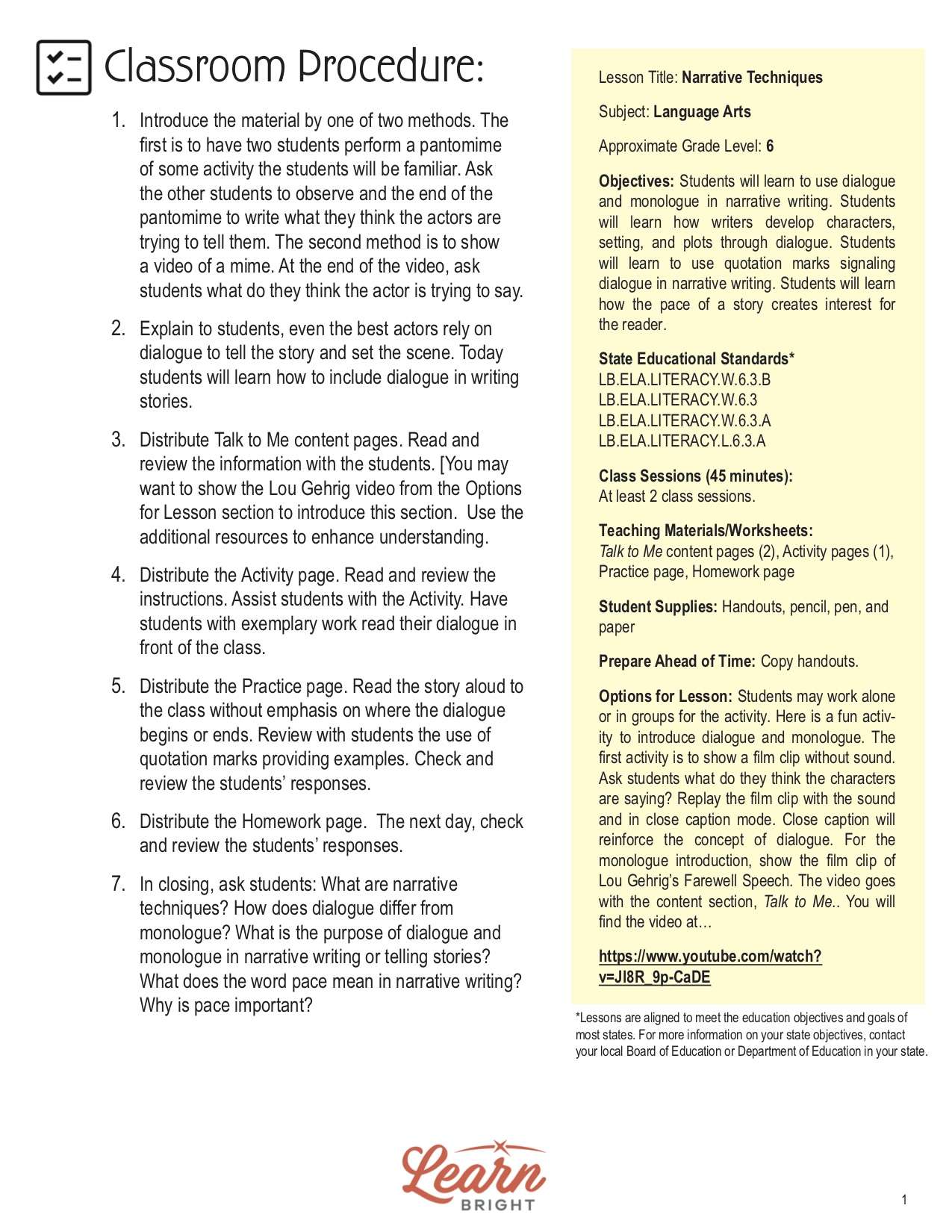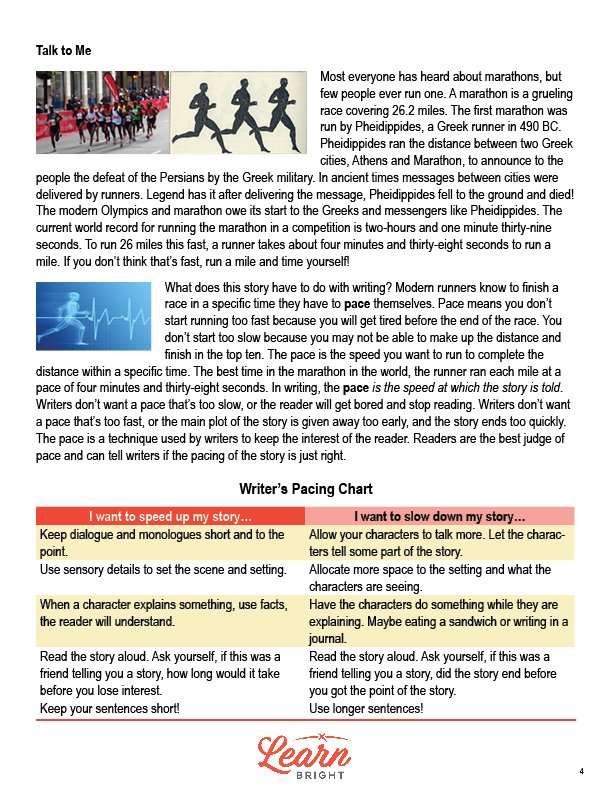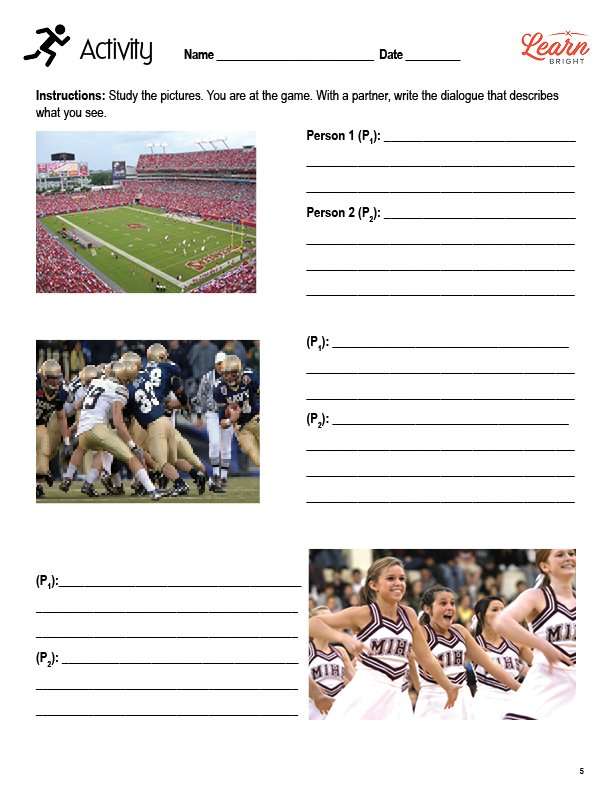Description
What our Narrative Techniques lesson plan includes
Lesson Objectives and Overview: Narrative Techniques presents the concept of using dialogue and monologue in narrative writing. Students will discover how authors develop characters, settings, and plots through dialogue. They will use quotation marks to signal dialogue in their writing. By the end of the lesson, students will know how to interest a reader by controlling the pace of a story.
There are a couple pages of content that outline the concepts of the lesson. Students will first learn that dialogue is another word for a conversation between two or more people. In writing, authors use dialogue to tell the story through the conversations of their characters. A dialogue always requires more than one character. A monologue, on the other hand, is more like a speech. With monologues, only one person is talking.
After reading through examples of these two techniques, students will next learn about pace. Like running in a marathon, writers have to stick to a good pace to ensure their story keeps readers’ attention the whole time. Sometimes a piece of writing is too slow; other times it’s too fast and ends way too quickly. The lesson present students with a writer’s pacing chart. It describes a few tips for how to slow down or speed up a story.
STUDY THE PICTURES ACTIVITY
The activity worksheet suggests students work with a partner. You may choose to have students work alone or with a group instead depending on your needs. The worksheet requires students to study three different pictures from a football game. Both students will take turns writing dialogue that describes what they see. One student will write for Person 1, and the other will write for Person 2.
FINISH THE STORY PRACTICE WORKSHEET
The practice worksheet requires students to read a story and find the dialogue. They will have to place quotation marks anywhere that they see conversation happening in the story. At the end, they will finish the story by adding dialogue of their own.
NARRATIVE TECHNIQUES HOMEWORK ASSIGNMENT
For the homework assignment, students will practice their monologue skills. They will use the story from the practice and apply it to the homework. Next, they will pretend they are the coach of the team from the story. Then they will write a short monologue in the space provided. Finally, they will pretend to be the coach of the other team. Likewise, they will write another monologue for that team.









